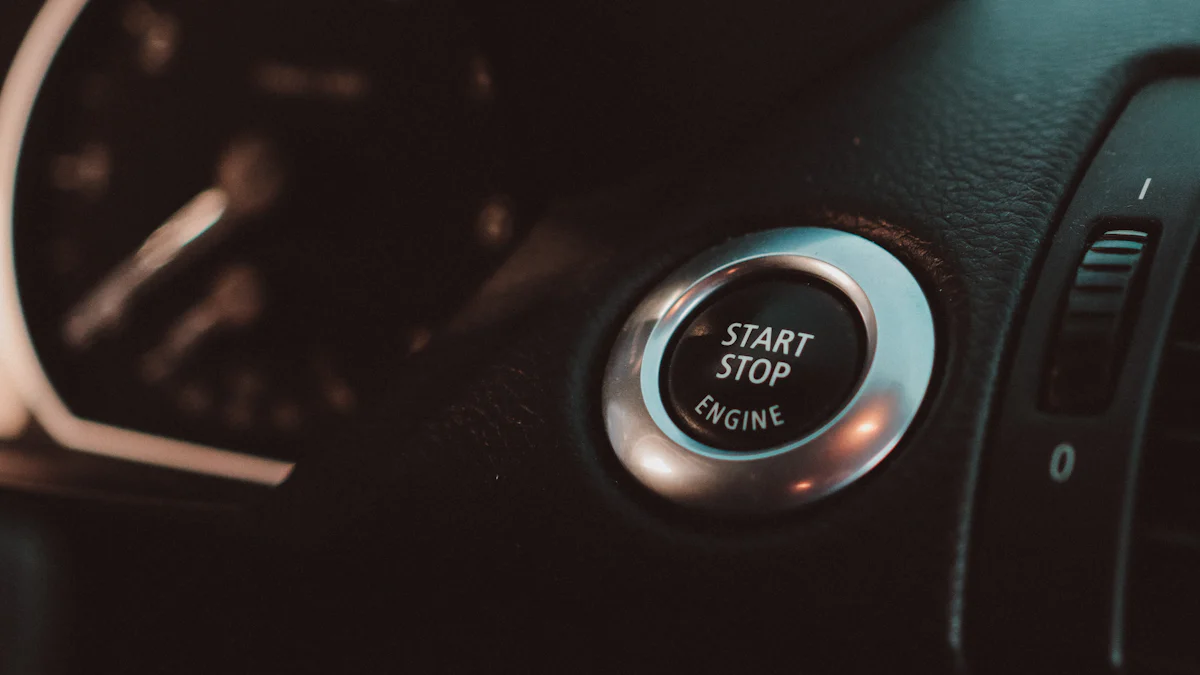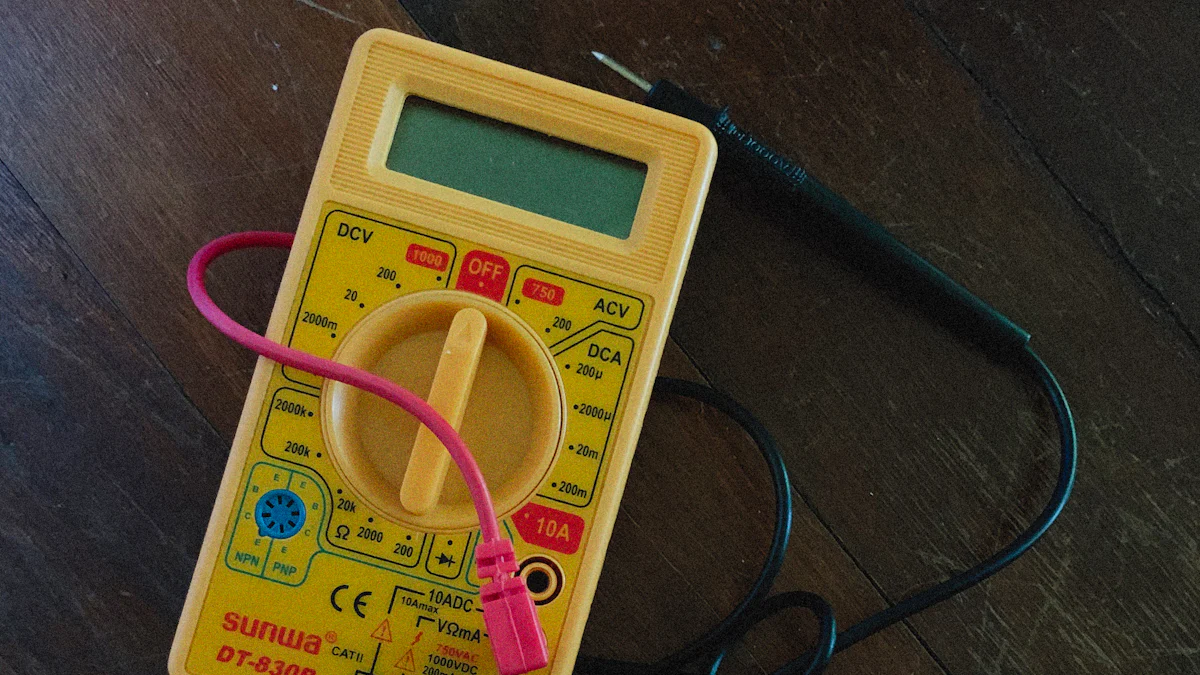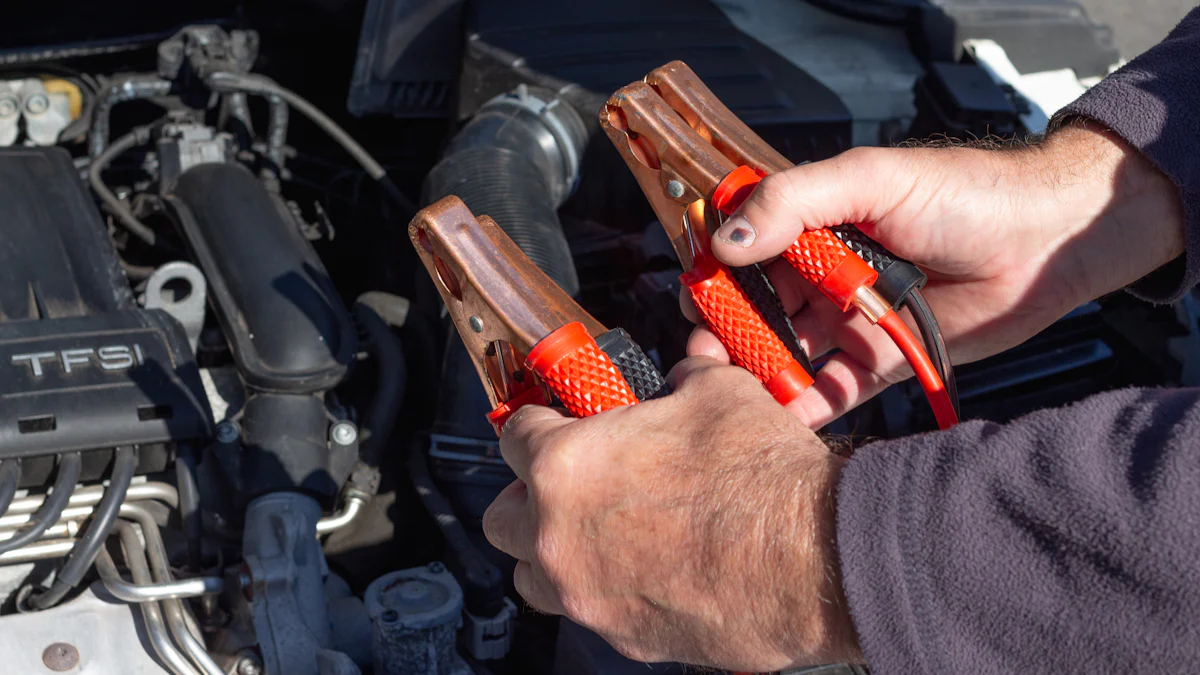Why Your Car Won’t Start? Starter Solenoid or Not?

When your car won’t start, it can be frustrating and confusing. One possible culprit is the starter solenoid. This small but essential component helps transfer electrical current from the battery to the starter motor. Recognizing the signs of a bad starter solenoid can save you time and money. Clicking sounds, intermittent starting, or no response when turning the key are common starter solenoid bad symptoms. Identifying these early can prevent unnecessary repairs and help you get back on the road quickly.
Key Takeaways
Listen for clicking sounds when starting your car. Clicking often means a problem with the starter solenoid. If it clicks repeatedly, check the battery and wires too.
If your car starts sometimes but not always, the solenoid might be wearing out. This could mean it needs to be checked or fixed.
A slow or weak engine crank may mean the solenoid isn’t giving enough power. Look for dim dashboard lights as a clue.
If the engine doesn’t respond at all when you turn the key, the solenoid might have failed. Check the battery and ignition switch before replacing it.
Test your battery and starter parts often. Finding problems early can stop sudden breakdowns and expensive fixes.
Starter Solenoid Bad Symptoms

Clicking Sounds When Turning the Key
When you hear clicking sounds as you turn the key, it often points to a problem with the starter solenoid. This noise occurs because the solenoid struggles to engage the starter motor. A bad starter solenoid can cause repeated clicking as it attempts to connect the electrical circuit. However, other issues can also produce similar sounds. For example:
A faulty starter may create a single click when it fails to engage.
Loose or corroded battery terminals can reduce the current flow, leading to clicking noises.
Mechanical problems, such as a locked-up engine, can also prevent the starter from functioning properly.
If you hear no sound at all, the solenoid might have completely failed. Identifying the exact cause of the clicking is crucial to avoid unnecessary repairs.
Intermittent Starting Issues
Intermittent starting problems can leave you stranded at the worst times. A failing starter solenoid often causes this issue due to wear and tear. Over time, the solenoid's internal components degrade, making it harder for the contactor to transfer power to the starter motor. Heat can also damage the solenoid, affecting its ability to engage consistently. In some cases, overtightened bolts may distort the solenoid, leading to internal damage.
These technical issues result in inconsistent voltage delivery, which prevents the engine from starting reliably. If your car starts sometimes but not always, the solenoid could be the culprit.
No Response When Turning the Key
If nothing happens when you turn the key, the starter solenoid might be completely nonfunctional. This symptom often indicates a severe failure in the solenoid's electrical or mechanical components. Without the solenoid transferring power, the starter motor cannot engage, leaving the engine unresponsive.
Other potential causes include a dead battery or a faulty ignition switch. However, if the battery and ignition system are in good condition, the solenoid is likely the source of the problem. Addressing this issue promptly can save you from being stranded unexpectedly.
Weak or Slow Cranking of the Engine
When your engine cranks weakly or slowly, it often signals an issue with the starter solenoid. This problem occurs because the solenoid struggles to deliver enough power to the starter motor. High resistance in the solenoid can burn its internal contacts. These burned contacts create excessive resistance, which reduces the current flowing to the starter motor. As a result, the motor cannot generate enough force to crank the engine efficiently.
You might notice the engine turning over sluggishly, especially in cold weather or after the car has been sitting idle for a while. This symptom can also appear if the battery is weak, but if the battery is fully charged, the solenoid is likely the cause.
To confirm the issue, listen closely when you turn the key. A weak cranking sound paired with dimming dashboard lights often points to a failing solenoid. Ignoring this symptom can lead to complete solenoid failure, leaving your car unable to start at all.
Starter Motor Engages but Doesn’t Turn the Engine
If you hear the starter motor engaging but the engine doesn’t turn over, the problem could still be linked to the starter solenoid. The solenoid’s job is to transfer electrical power from the battery to the starter motor. When the solenoid fails, it may not provide enough power for the motor to engage fully.
This issue can also stem from mechanical problems within the starter motor itself. For example:
The motor’s internal gears may be worn or damaged.
The pinion gear might fail to mesh with the engine’s flywheel.
In either case, the engine remains stationary even though the starter motor is trying to do its job. You should address this symptom quickly to avoid further damage to the motor or other components.
Signs of Other Common Car Issues
When your car won’t start, the issue might not always be the starter solenoid. Other common problems, like a dead battery, a faulty ignition switch, or a bad alternator, can also prevent your car from starting. Recognizing these signs can help you identify the root cause and avoid unnecessary repairs.
Dead Battery
Dim or No Headlights
If your headlights appear dim or don’t turn on at all, the battery might be dead. A weak battery cannot supply enough power to the starter motor or other electrical components. This often happens when the battery is old or has been drained by leaving lights or accessories on for too long.
No Power to Electrical Components
A completely dead battery will leave your car’s electrical components unresponsive. You won’t hear the starter relay click, and the dashboard lights won’t illuminate. Testing the battery voltage with a multimeter can confirm if the battery is the problem.
Faulty Ignition Switch
No Dashboard Lights
When the ignition switch fails, you might notice that the dashboard lights don’t come on when you turn the key. This happens because the switch cannot send power to the car’s electrical systems.
No Crank When Turning the Key
A faulty ignition switch can also prevent the starter relay from activating. Common causes of ignition switch failure include:
Worn ignition switch contacts
Temperature problems
If the starter motor doesn’t crank despite a charged battery, the ignition switch could be the issue.
Bad Alternator
Battery Not Charging
A bad alternator can prevent the battery from charging properly. If the alternator fails, the battery will eventually lose its charge, leaving the starter motor without enough power to crank the engine.
Electrical Issues While Driving
You might notice flickering lights or other electrical problems while driving. These signs indicate that the alternator isn’t supplying consistent power to the car’s systems. Replacing the alternator can resolve these issues and restore proper function to the starter relay and other components.
Fuel System Problems
When your car cranks but doesn’t start, or you notice fuel-related issues, the problem might lie in the fuel system. Understanding these symptoms can help you identify and address the issue effectively.
Engine Cranks but Doesn’t Start
If your engine cranks but refuses to start, the fuel system might not be delivering fuel to the engine. This issue often points to one of the following problems:
Empty Fuel Tank: It may sound obvious, but running out of gas is a common reason for this symptom.
Clogged Fuel Filter: A dirty fuel filter blocks fuel flow, preventing the engine from starting.
Faulty Fuel Pump: The fuel pump might fail to deliver fuel from the tank to the engine.
Bad Fuel Injectors: Malfunctioning injectors can disrupt the proper fuel-air mixture needed for combustion.
Tip: Check your fuel gauge first. If the tank isn’t empty, inspect the fuel pump and filter for signs of wear or damage.
Smell of Fuel or No Fuel Delivery
A strong fuel smell or lack of fuel delivery can indicate a serious problem. These symptoms often suggest:
Leaking Fuel Lines: Damaged or corroded fuel lines can cause leaks, leading to a noticeable fuel odor.
Faulty Fuel Pressure Regulator: This component controls fuel pressure. If it fails, you might smell fuel or experience poor engine performance.
No Fuel Delivery: A completely blocked fuel line or a dead fuel pump can stop fuel from reaching the engine.
Note: A fuel smell inside the car could signal a dangerous leak. Avoid driving and seek professional help immediately.
By recognizing these signs, you can narrow down the issue and take the necessary steps to fix it. Proper maintenance of your fuel system can prevent these problems from occurring in the first place.
How to Diagnose a Failing Starter or Other Issues

Testing the Battery Voltage
Start by checking your car battery. A weak or dead battery often mimics the symptoms of a failing starter. Use a digital multimeter to measure the battery voltage. Set the multimeter to DC voltage and connect the probes to the battery terminals. A healthy battery should read around 12.6 volts when the engine is off. If the voltage drops below 12.4 volts, the battery might not have enough power to start the car.
If the voltage is low, recharge the battery and test it again. If the problem persists, the issue could lie with the alternator or the starter solenoid. Regularly testing your battery can help you catch potential problems early and avoid unexpected breakdowns.
Listening for Solenoid Clicks
When diagnosing a failing starter, pay attention to the sounds your car makes when you turn the key. A single click or repeated clicking noises often indicate a problem with the starter solenoid. These clicks happen when the solenoid tries to engage but cannot transfer enough power to the starter motor.
To confirm, listen closely while someone else turns the key. If you hear no sound at all, the solenoid might have completely failed. You can also use a digital multimeter to perform a continuity test on the solenoid. This test helps identify scorched contacts or internal damage. If the solenoid fails the test, replacing it is the best solution.
Inspecting the Ignition Switch
The ignition switch plays a crucial role in starting your car. If it fails, you might experience symptoms that resemble a failing starter. During inspection, look for these common signs:
The key gets stuck and won’t turn to the "start" position.
The car stalls shortly after starting or while driving.
Turning the key produces no noise from the starter.
Dashboard lights flicker when the vehicle is in motion.
If you notice any of these issues, the ignition switch could be the culprit. Replacing a faulty ignition switch can restore proper functionality and prevent further complications.
Tip: Always use the right tools, like a multimeter, to diagnose electrical components accurately. This ensures you address the correct issue without unnecessary repairs.
Checking the Alternator Output
The alternator plays a critical role in keeping your car’s electrical system running. It charges the battery and powers components like the headlights and dashboard. A malfunctioning alternator can mimic the symptoms of a failing starter, so testing its output is essential.
To check the alternator, start your car and let it idle. Use a digital multimeter to measure the voltage at the battery terminals. A healthy alternator should produce between 13.5 and 14.5 volts while the engine runs. If the reading falls below this range, the alternator might not be charging the battery properly.
You can also observe signs of a bad alternator without tools. Flickering headlights, dim interior lights, or a battery warning light on the dashboard often indicate alternator issues. Electrical problems while driving, such as power windows or the radio failing, also point to this component.
Tip: If your car stalls while driving, the alternator could be the culprit. A failing alternator can drain the battery, leaving the engine without power.
If the alternator fails the voltage test or you notice these symptoms, replacing it is the best solution. Ignoring alternator problems can lead to a dead battery and leave you stranded.
Examining the Fuel System
The fuel system ensures your engine gets the right amount of fuel for combustion. Problems in this system can prevent your car from starting, even if the starter and battery are in good condition.
Begin by checking the fuel level. An empty tank is an obvious but common reason for a no-start condition. If the tank has fuel, inspect the fuel pump. Turn the key to the "on" position and listen for a humming sound from the fuel tank. This sound indicates the pump is working.
A clogged fuel filter can also block fuel flow. Replace the filter if it hasn’t been serviced recently. Faulty fuel injectors may disrupt the fuel-air mixture, causing the engine to crank but not start.
Note: A strong fuel smell could signal a leak in the fuel lines or a faulty pressure regulator. Address these issues immediately to avoid safety hazards.
Regular maintenance of the fuel system can prevent these problems. If you suspect a fuel system issue, act quickly to avoid further damage to your car.
When to Seek Professional Help
Persistent Starting Issues Despite Troubleshooting
If your car refuses to start even after you’ve tried all the basic troubleshooting steps, it’s time to consult a professional. Persistent starting problems often indicate deeper issues that require specialized tools and expertise. For example, if you’ve tested the battery, alternator, and starter solenoid but the car still won’t start, the problem might involve complex electrical or mechanical components.
To differentiate between electrical and mechanical issues, listen for the starter's sound. If you hear a whirring noise, the one-way clutch may be faulty. If the solenoid fails, the starter won't spin. Testing involves removing the starter and checking the one-way clutch's operation. A bench test can confirm the starter's functionality using jumper cables.
A mechanic can perform these tests accurately and identify the root cause of the problem. Ignoring persistent starter issues can lead to further damage and higher repair costs.
Lack of Tools or Mechanical Knowledge
Diagnosing car problems often requires specific tools and technical know-how. If you lack the necessary equipment, such as a multimeter or jumper cables, you might struggle to pinpoint the issue. Additionally, without a solid understanding of how the starter system works, you risk misdiagnosing the problem.
Professional mechanics have access to advanced diagnostic tools and years of experience. They can quickly identify whether the issue lies with the starter solenoid, ignition switch, or another component. Seeking help saves you time and prevents unnecessary frustration.
Complex Electrical or Fuel System Problems
Electrical and fuel system issues can be challenging to diagnose and repair. For instance, a failing alternator might mimic the symptoms of a bad starter solenoid. Similarly, a clogged fuel filter or faulty fuel pump can prevent your car from starting, even if the starter system is functioning correctly.
These problems often require in-depth testing and repairs that go beyond basic troubleshooting. Mechanics can use specialized equipment to test electrical circuits, fuel pressure, and other critical systems. Their expertise ensures the problem is resolved efficiently and safely.
Tip: If you suspect a fuel leak or notice a strong fuel smell, avoid driving the car. A professional should address such issues immediately to prevent safety hazards.
By recognizing when to seek professional help, you can avoid unnecessary stress and ensure your car gets the care it needs.
A failing starter solenoid is a common reason your car won’t start, but it’s not the only one. Wear and tear, heat damage, or overtightened bolts can cause solenoid failure, leading to issues like no clicking noise or an engine that won’t crank. Recognizing these symptoms helps you pinpoint the problem and take action. If troubleshooting doesn’t resolve the issue, seeking professional help ensures accurate diagnosis and repair. Addressing the problem early prevents further complications and keeps your car running smoothly.
FAQ
What is the purpose of a car starter solenoid?
The starter solenoid transfers electrical current from the battery to the starter motor. It also engages the starter gear with the engine’s flywheel, allowing the engine to start. Without it, your car starter system cannot function properly.
Can a bad starter solenoid drain the battery?
Yes, a faulty solenoid can cause a parasitic drain on the battery. This happens when the solenoid fails to disconnect the electrical circuit after starting, leaving components powered unnecessarily.
How do you test a starter solenoid?
You can test a starter solenoid by listening for clicking sounds when turning the key. Use a multimeter to check for continuity and voltage. If the solenoid fails these tests, it likely needs replacement.
What happens if you ignore starter solenoid issues?
Ignoring solenoid problems can lead to complete car starter failure. This leaves your vehicle unable to start, potentially stranding you. Addressing the issue early prevents further damage and costly repairs.
Is replacing a starter solenoid expensive?
Replacing a starter solenoid is relatively affordable compared to other car repairs. Costs vary depending on your vehicle type, but it’s generally less expensive than replacing the entire starter motor.
See Also
A Comprehensive Guide to Testing Starters for Vehicles
Top 10 Alternator Issues That All Drivers Must Understand
Choosing the Right Fridge Start Relay: Expert Advice
